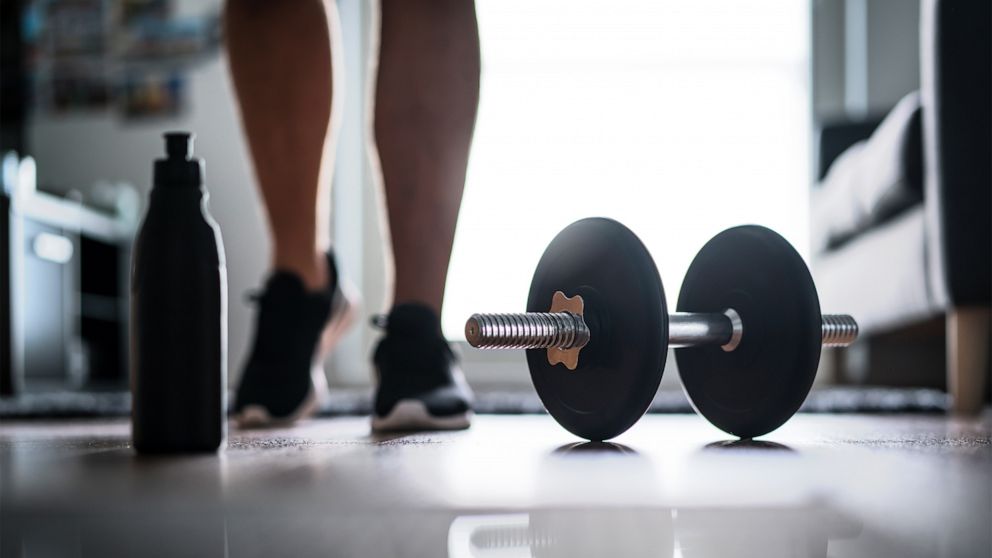Creating a sustainable workout routine is one of the most powerful investments you can make in your long-term health and well-being. Unlike crash fitness programs that promise rapid results but often lead to burnout and disappointment, a sustainable approach focuses on building habits that seamlessly integrate into your lifestyle and stand the test of time. The key lies not in perfection, but in consistency and adaptability.
Many fitness enthusiasts start their journey with tremendous enthusiasm, only to find themselves abandoning their routines within weeks or months. This common pattern occurs because most people approach exercise with an all-or-nothing mentality, setting unrealistic expectations that are impossible to maintain alongside work, family, and social commitments. The solution isn’t to exercise harder or longer—it’s to exercise smarter.
A truly sustainable workout routine recognizes that life is dynamic and unpredictable. Some weeks you’ll have more energy and time, while others will present challenges that require flexibility and self-compassion. The most successful fitness journeys are built on routines that can adapt to these natural fluctuations while maintaining forward momentum toward your health goals.
Research consistently shows that people who maintain long-term fitness success share common characteristics: they choose activities they genuinely enjoy, set realistic and measurable goals, and view exercise as a non-negotiable part of their self-care routine rather than a punishment for poor eating habits. They understand that sustainable fitness is about creating a lifestyle that supports their well-being, not just their physical appearance.
Assess Your Current Fitness Level and Lifestyle

Before digging into any exercise program, conducting an honest assessment of your current fitness level and lifestyle constraints is essential for long-term success. This foundational step prevents overcommitment and helps you create realistic expectations that align with your actual circumstances rather than your aspirational ones.
Start by evaluating your current physical capabilities without judgment. Consider factors such as how long you can walk without feeling winded, your flexibility levels, and any previous injuries or physical limitations. This assessment isn’t about comparing yourself to others—it’s about establishing a baseline that allows you to track meaningful progress over time.
Equally important is analyzing your weekly schedule and identifying realistic time slots for exercise. Take note of your daily responsibilities, including work commitments, family obligations, and social activities. Understanding these time constraints helps you identify potential workout windows and prevents the frustration of setting unrealistic scheduling expectations that are doomed to fail.
Set SMART and Realistic Fitness Goals
The foundation of any sustainable workout routine lies in setting realistic, achievable goals that motivate rather than overwhelm. Instead of vague aspirations like “get fit” or “lose weight,” focus on specific, measurable objectives that provide clear direction and allow you to track progress effectively.
Implement the SMART goal framework: make your objectives Specific, Measurable, Achievable, Relevant, and Time-bound. For example, rather than aiming to “run more,” set a goal to “complete three 30-minute runs per week for the next month to build endurance for a 5K race.” This approach provides clarity and creates manageable milestones that build confidence and momentum.
Break larger goals into smaller, incremental steps that feel manageable within your current lifestyle. If your ultimate objective is running a half-marathon, start with a goal of completing a 5K, then gradually increase distance over time. This progressive approach prevents burnout and reduces the risk of injury while maintaining motivation through regular achievements.
Choose Activities You Genuinely Enjoy

Sustainability in exercise depends largely on enjoyment—if you dislike your workout, you’re significantly less likely to maintain it long-term. The most effective exercise routine is one that you look forward to rather than dread, transforming physical activity from a chore into a rewarding part of your day.
Experiment with various types of physical activities to discover what resonates with your personality and preferences. Consider options like strength training, yoga, cycling, swimming, dancing, hiking, or group fitness classes. Some people thrive in social environments like team sports or group classes, while others prefer solitary activities that provide quiet reflection time.
Don’t feel obligated to stick with traditional gym-based exercises if they don’t appeal to you. Many effective workouts can be done at home, outdoors, or in community spaces. The key is finding movement that feels natural and enjoyable rather than forced or punitive.
Create a Flexible and Consistent Schedule
Consistency forms the backbone of sustainable fitness, but rigid scheduling often leads to failure when life inevitably interferes. The solution is creating a structured yet flexible approach that treats exercise as a priority while accommodating the unpredictable nature of daily life.
Schedule your workouts like important appointments, blocking time in your calendar, and treating these sessions as non-negotiable commitments to yourself. However, build flexibility into your routine by having backup plans for different scenarios. Develop shorter workout options for busy days, alternative activities for when your primary choice isn’t available, and strategies for maintaining movement during travel or schedule disruptions.
Consider varying your workout types and durations based on your weekly schedule. Plan longer, more intensive sessions when you have adequate time and energy, while incorporating shorter activities like yoga or brisk walks on particularly busy days. This approach ensures you maintain consistency without the stress of rigid scheduling.
Incorporate Variety and Progressive Overload

Variety serves multiple purposes in a sustainable workout routine: it prevents boredom, reduces the risk of overuse injuries, and ensures you’re developing different aspects of fitness. Incorporate a mix of cardiovascular exercise, strength training, flexibility work, and activities that challenge your balance and coordination.
Apply the principle of progressive overload by gradually increasing the intensity, duration, or complexity of your workouts over time. This doesn’t mean every workout needs to be harder than the last—progression can be subtle and should align with your body’s adaptation rate. Some weeks you might increase weight or duration, while others focus on improving form or trying new variations.
Listen to your body’s signals and adjust accordingly. Sustainable fitness requires balancing challenge with recovery, pushing yourself when you feel strong while respecting your body’s need for rest and regeneration.
Plan for Rest and Recovery
Recovery is not the absence of exercise—it’s an active component of a well-designed fitness routine that prevents burnout and reduces injury risk. Incorporate rest days into your weekly schedule and view them as essential for long-term success rather than signs of weakness or laziness.
Active recovery can include gentle activities like walking, stretching, or yoga that promote blood flow and flexibility without placing significant stress on your body. These activities help maintain your exercise habit while allowing your muscles and nervous system to recover from more intensive training sessions.
Pay attention to signs of overtraining, such as persistent fatigue, decreased performance, mood changes, or increased susceptibility to illness. When these symptoms appear, prioritize rest and recovery over maintaining your regular exercise schedule.
Track Progress and Celebrate Achievements
Monitoring your progress provides motivation and helps you identify what’s working in your routine versus what needs adjustment. Keep a simple exercise journal or use fitness apps to track workouts, noting not just what you did but how you felt during and after exercise.
Celebrate small victories along the way rather than waiting for major transformations. Acknowledge improvements in energy levels, sleep quality, mood, or the simple fact that you’ve maintained consistency for a certain period.
These non-scale victories often provide more sustainable motivation than focusing solely on physical changes. Regularly reassess and adjust your routine based on what you learn about your preferences, schedule, and progress. A sustainable workout routine evolves with your life circumstances rather than remaining static.

